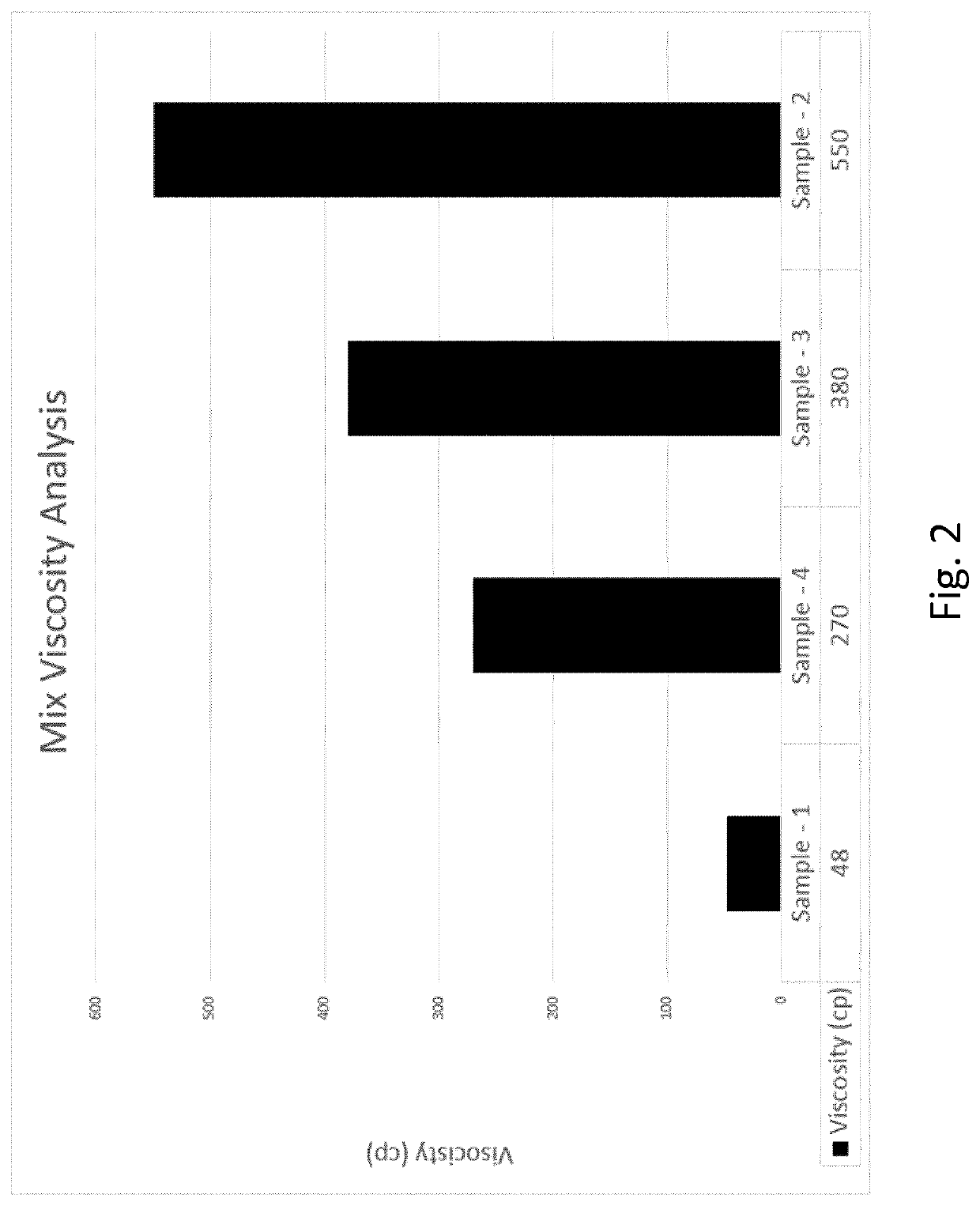A method of producing frozen confection with protein agglomeration and delayed sucrose addition
a technology of protein agglomeration and frozen confection, which is applied in the field of agglomerated protein production methods, can solve the problems of limited application, non-stabilized or minimally stabilized, and lack of showing how to provide, so as to improve texture, mouthfeel, and prevent iciness in the product during distribution
- Summary
- Abstract
- Description
- Claims
- Application Information
AI Technical Summary
Benefits of technology
Problems solved by technology
Method used
Image
Examples
example 1
[0070]Ice Cream with Milk Protein-Based Agglomerates Obtained by Light Acidification and Separate Sugar Addition.
Material and Methods
Samples:
Sample 1:
[0071]Is a commercially available ice cream (control)
Sample 1—Composition—Variety 1
[0072]
Fat16wt. %Sugared Egg Yolks1.2 wt. % (comprising 10% sucrose)Milk Solids Non Fat10wt. %Sucrose15wt. %Total Solids42.2wt. %
Sample 2:
[0073]Same composition as sample 1 but with pH reduced to 6.2 before pasteurization and sucrose addition was after pasteurization.
Sample 3:
[0074]Same composition as sample 1 but with pH was reduced to 6.2 before pasteurization but sucrose added before pasteurization.
Sample 4: (Delayed Sucrose):
[0075]The pH was 6.51 (Regular pH) but sucrose added after pasteurization.
[0076]All ingredient mixes have similar fat and solids ranges. The fat, MSNF and sugared egg yolk are mixed together. The sucrose is added to the mixes before the heat treatment or after as indicated above.
[0077]The processing of the mixes follows the flow d...
example 2
[0093]Ice Cream with Milk Protein-Based Agglomerates Obtained by
Light Acidification and Separate Sugar Addition.
Material and Methods
Sample 5:
[0094]Is a commercially available ice cream (control)
Sample 5—Composition of Variety 2
[0095]
Fat16wt. %Sugared Egg Yolks1.2 wt. % (comprising 10% sucrose)Milk Solids Non Fat10wt. %Sucrose15wt. %Total Solids42.2wt. %
Sample 6:
[0096]Same composition as sample 5 but with pH reduced to 6.2 before pasteurization and sucrose addition was after pasteurization.
Sample 7:
[0097]Same composition as sample 1 but with pH was reduced to 6.2 before pasteurization but sucrose added before pasteurization.
[0098]The samples were prepared as indicated in Example 1.
Results
[0099]FIG. 4 shows the viscosity of a samples 5 to 6.
[0100]A viscosity increased was obtained in the samples with reduction in pH and delayed sucrose addition.
[0101]Further reduction in pH may result in higher viscosity but lemon juice concentrate flavor impact was observed at pH lower than...
PUM
 Login to View More
Login to View More Abstract
Description
Claims
Application Information
 Login to View More
Login to View More - R&D
- Intellectual Property
- Life Sciences
- Materials
- Tech Scout
- Unparalleled Data Quality
- Higher Quality Content
- 60% Fewer Hallucinations
Browse by: Latest US Patents, China's latest patents, Technical Efficacy Thesaurus, Application Domain, Technology Topic, Popular Technical Reports.
© 2025 PatSnap. All rights reserved.Legal|Privacy policy|Modern Slavery Act Transparency Statement|Sitemap|About US| Contact US: help@patsnap.com



